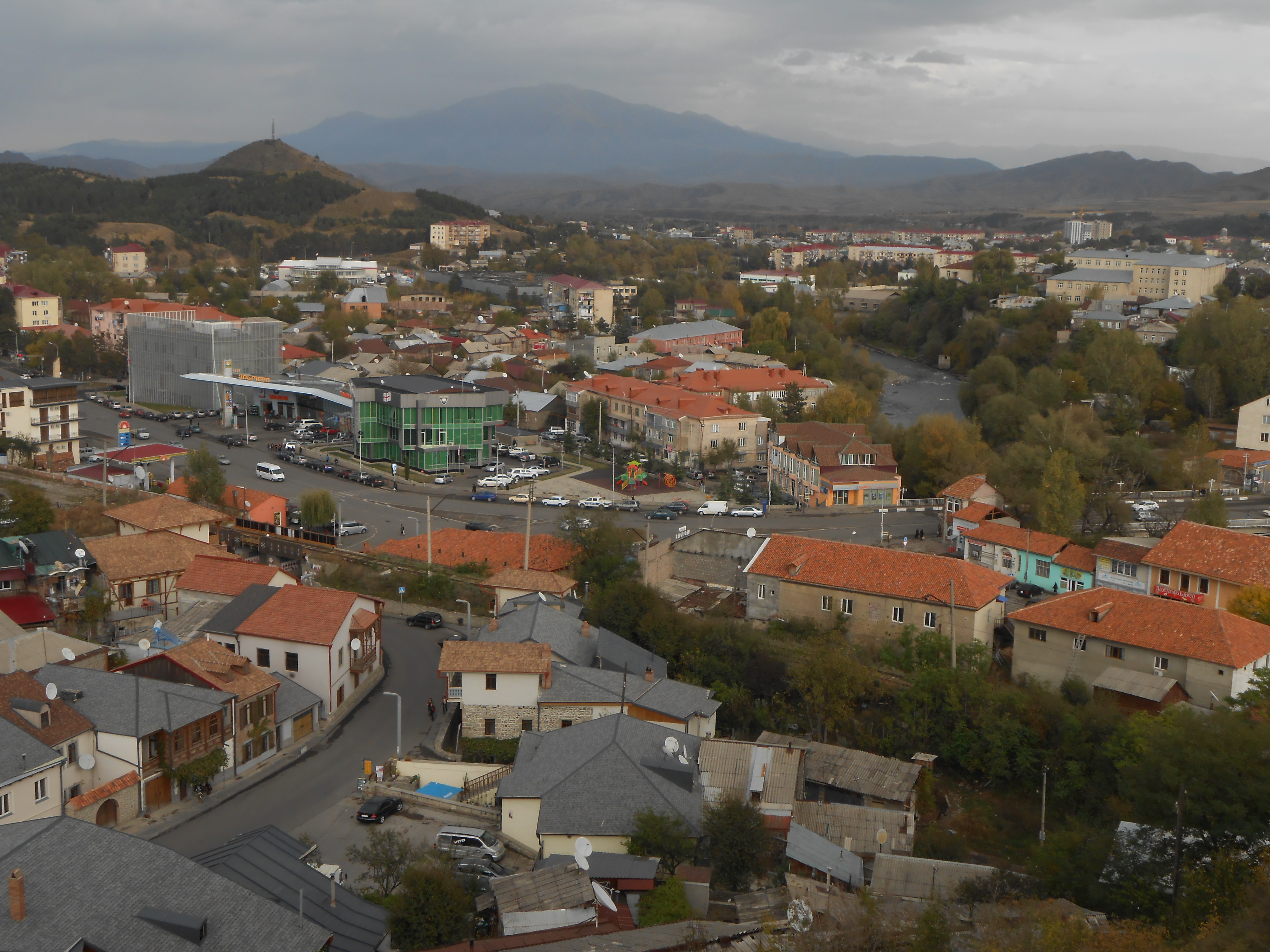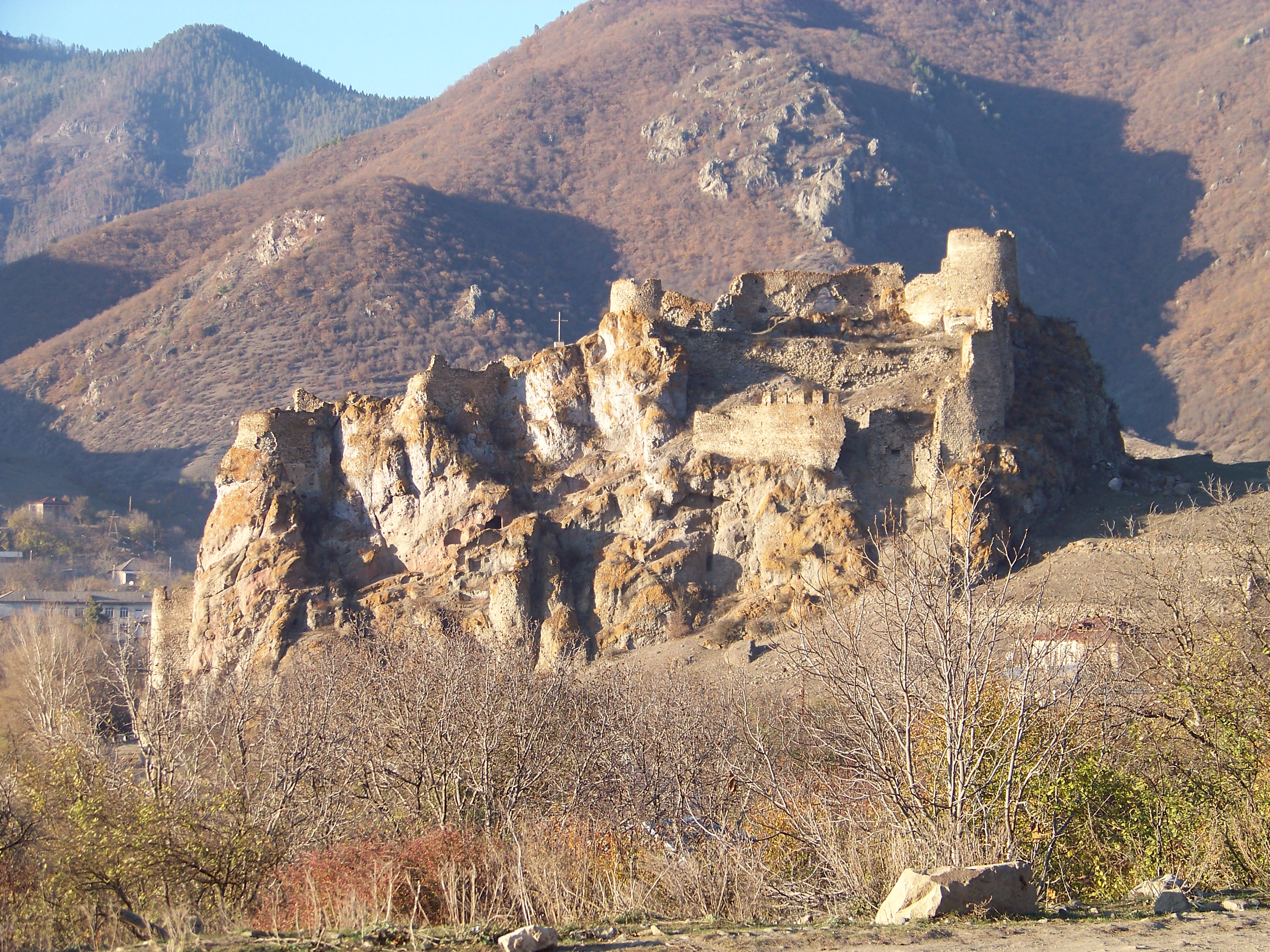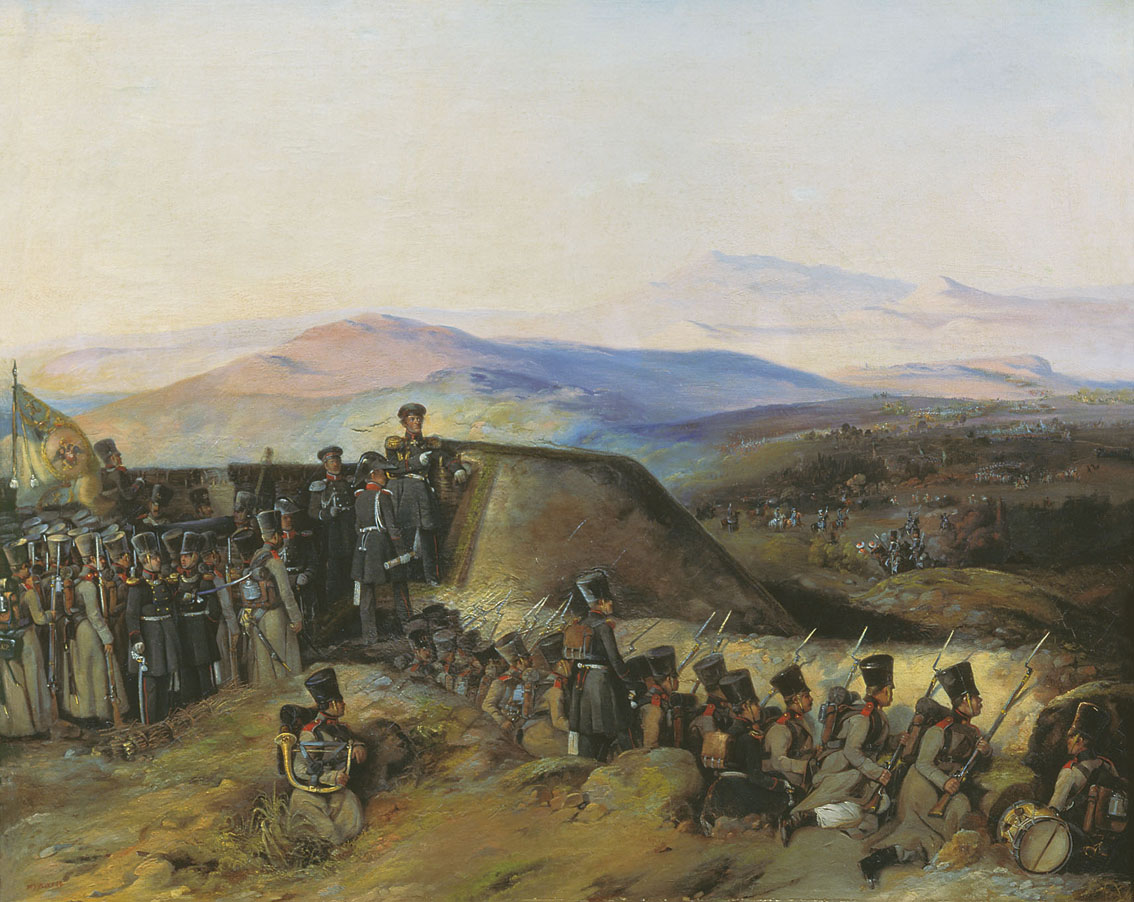|
Akhaltsikhe
Akhaltsikhe ( ka, ახალციხე ), formerly known as Lomsia ( ka, ლომსია ), is a small city in Georgia's southwestern region () of Samtskhe–Javakheti. It is the administrative center of the Akhaltsikhe Municipality and the Samtskhe–Javakheti region. It is situated on both banks of the small river Potskhovi (a left tributary of the Kura), which divides the city between the old city in the north and new in the south. The 9th-century Akhaltsikhe (Rabati) Castle, which was recently restored, is located in the old part of the city. It is one of the main attractions of the Samtskhe–Javakheti region, along with Vardzia, Vale, Okrostsikhe and Zarzma. Toponymy Akhaltsikhe is the Georgian name of the town, which literally means "new fortress". It is attested in Arabic sources as (and ), in Persian as (also spelled as ), and in Turkish sources as . The Azerbaijani village of Axısxa is also named after it, due to the population of the village origin ... [...More Info...] [...Related Items...] OR: [Wikipedia] [Google] [Baidu] |
Akhaltsikhe (19th Century)
Akhaltsikhe ( ka, ახალციხე ), formerly known as Lomsia ( ka, ლომსია ), is a small city in Georgia's southwestern region () of Samtskhe–Javakheti. It is the administrative center of the Akhaltsikhe Municipality and the Samtskhe–Javakheti region. It is situated on both banks of the small river Potskhovi (a left tributary of the Kura), which divides the city between the old city in the north and new in the south. The 9th-century Akhaltsikhe (Rabati) Castle, which was recently restored, is located in the old part of the city. It is one of the main attractions of the Samtskhe–Javakheti region, along with Vardzia, Vale, Okrostsikhe and Zarzma. Toponymy Akhaltsikhe is the Georgian name of the town, which literally means "new fortress". It is attested in Arabic sources as (and ), in Persian as (also spelled as ), and in Turkish sources as . The Azerbaijani village of Axısxa is also named after it, due to the population of the village originati ... [...More Info...] [...Related Items...] OR: [Wikipedia] [Google] [Baidu] |
Battle Of Akhaltsikhe
The Battle of Akhaltsikhe during the Russo-Turkish War, 1828–1829, may refer to one of the following. Firstly, an offensive battle under the walls of Akhaltsikhe on August 21 (August 9 O.S.), 1828, between 9,000 Russians under Field-Marshal Paskevich on the offensive and 30,000 Turks under Kios-Mahomet-Pasha. The Russians were victorious by a swift and surprise attack in a heavy thunderstorm. They then successfully stormed the Akhaltsikhe Castle (28 (O.S. 16) August 1828) after a week-long siege. Secondly, a successful Russian defense of the same fortress by a garrison under General Nicholas Muravyov from a 20,000 Turkish force under Ahmed-Bey on March 3–16 (February 20 – March 4 O.S.), 1829, during the same conflict. Background Akhaltsikhe is in the center of Samtskhe-Javakheti, with a population of about 20,000. Akhaltsikhe was founded in the 12th century, but the first large settlement had arrived in the 10th century by Guaram Mampal, son of a king Tao. The settle ... [...More Info...] [...Related Items...] OR: [Wikipedia] [Google] [Baidu] |
Akhaltsikhe Municipality
Akhaltsikhe ( ka, ახალციხის მუნიციპალიტეტი, ''Akhaltsikhis munitsip’alit’et’i'')) is a municipality in Georgia's southern region of Samtskhe-Javakheti. Covering an area of . As of 2021 it had a population of 39,463 people. The city of Akhaltsikhe is its administrative centre. Administrative divisions Akhaltsikhe municipality is administratively divided into two cities (Akhaltsikhe and Vale) and 14 communities (თემი, temi) with 46 villages (სოფელი, sopeli). The city of Akhaltsikhe was separated in 2014 from the municipality and was a so-called "self-governed" city (or kalaki). This administrative and governance reform was deemed too inefficient and expensive and was revoked in 2017. Since then, the city of Akhaltsikhe has been part of the general municipality again. Politics Akhaltsikhe Municipal Assembly ( Georgian: ახალციხის საკრებულო, ''Akhaltsikhe Sakrebulo'') is a rep ... [...More Info...] [...Related Items...] OR: [Wikipedia] [Google] [Baidu] |
Akhaltsikhe Castle
Akhaltsikhe (Rabati) Castle ( ka, ახალციხის (რაბათის) ციხე) is a medieval fortress built in the 9th century under the name "Lomsia Castle" in the city of Akhaltsikhe in southern Georgia, recently globally reconstructed. One of the main attractions of the Samtskhe-Javakheti region along with Vardzia. Name The original name of the fortress in the 9th century was Lomsia, which can be translated from Georgian as "Lion". At the end of the 12th century, Lomsia acquired the new name Akhal-tsikhe, which literally translates as “New fortress”, the Arabic name "Rabati" means fortress. Rabati was usually called the trading quarter at the fortress, earlier mainly Jewish merchants and craftsmen lived in the Rabat quarter, however mainly after reconstruction the name stuck to the all fortress itself. On the official web site of municipality of Akhaltsikhe town and on the official Facebook page of the fortress the name is "Akhaltsikhe (Rabati) Castle" ... [...More Info...] [...Related Items...] OR: [Wikipedia] [Google] [Baidu] |
Russo-Turkish War (1828–1829)
The Russo-Turkish War of 1828–1829 resulted from the Greek War of Independence of 1821–1829; war broke out after the Ottoman Sultan Mahmud II closed the Dardanelles to Russian Empire , Russian ships and in November 1827 revoked the 1826 Akkerman Convention in retaliation for the participation of the Imperial Russian Navy in the Battle of Navarino of October 1827. After suffering several defeats, both in the Balkans and in the Caucasus, the Sultan decided to suing for peace, sue for peace, which resulted in the signing of the Treaty of Adrianople (1829), Treaty of Adrianople on 14 September 1829. The Balkan front At the start of hostilities the Russian army of 100,000 men was commanded by Emperor Nicholas I of Russia, Nicholas I, while the Ottoman forces were commanded by Agha Hüseyin Pasha appointed by Sultan Mahmut II. In April and May 1828 the Russian commander-in-chief, Prince Peter Wittgenstein, moved into the Danubian Principalities. In June 1828, the main R ... [...More Info...] [...Related Items...] OR: [Wikipedia] [Google] [Baidu] |
Samtskhe–Javakheti
Samtskhe–Javakheti ( ka, სამცხე-ჯავახეთი, , ) is a region (mkhare) in southern Georgia with a population of 147,400 (2023) and an area of . The region has Akhaltsikhe as its administrative center. Samtskhe–Javakheti is made up of the historical Georgian provinces Meskheti, Javakheti and Tori. The Baku-Tbilisi-Ceyhan oil pipeline, the South Caucasus natural gas pipeline, and the Kars–Tbilisi–Baku railway pass through the region. The population of the region is made up of Georgians and Armenians, as well as smaller numbers of Russians. Geography Samtskhe–Javakheti borders Adjara and Guria in the northwestern tip, Imereti in the north, Shida Kartli in the northeast and Kvemo Kartli in the east. The southern border is formed by Armenia, the southwestern flank borders Turkey. The region covers the Javakheti Plateau, a highland of volcanic origin and the northern extension of the Armenian highlands. The plains are between 1500 and 2000 m ... [...More Info...] [...Related Items...] OR: [Wikipedia] [Google] [Baidu] |
Samtskhe-Saatabago
The Samtskhe-Saatabago or Samtskhe Atabegate ( ka, სამცხე-საათაბაგო), also called the Principality of Samtskhe (სამცხის სამთავრო), was a Georgian feudal principality in Zemo Kartli, ruled by an atabeg (tutor) of Georgia for nearly three and a half centuries, between 1268 and 1625. Its territory consisted of the modern-day Samtskhe-Javakheti region and the historical region of Tao-Klarjeti. History Duchy of Samtskhe By the early 13th century, members of the House of Jaqeli were one among many powerful marcher lords, and certainly not the most significant. The title atabeg, by which the Jaqelis would later be known, was as yet reserved for the Mkhargrdzelis, the Armenian family that controlled Ani. The rise of the Jaqeli line was intimately bound up with the Mongol invasion of Georgia. In this initial phase of conquest, most of the Georgian and Armenian nobles, who held military posts along the frontier regions sub ... [...More Info...] [...Related Items...] OR: [Wikipedia] [Google] [Baidu] |
Childir Eyalet
The Eyalet of Childir () or AkhalzikOther variants of this name include Akalzike (from ) was an eyalet of the Ottoman Empire in the Southwestern Caucasus. The area of the former Çıldır Eyalet is now divided between Samtskhe-Javakheti and the Autonomous Republic of Adjara in Georgia and provinces of Artvin, Ardahan and Erzurum in Turkey. The administrative center was Çıldır between 1578 and 1628, Ahıska between 1628 and 1829, and Oltu between 1829 and 1845. History Samtskhe was the only Georgian principality to permanently become an Ottoman province (as the eyalet of Cildir). In the eighty years after the Battle of Zivin, the region was gradually absorbed into the empire. The Ottomans took the Ahıska region from the Principality of Meskheti, a vassal state of Safavid dynasty. In 1578, when the new province was established, they appointed the former Georgian prince, Minuchir (who took the name of ''Mustafa'' after converting to Islam) as the first governor. This e ... [...More Info...] [...Related Items...] OR: [Wikipedia] [Google] [Baidu] |
Mongol Invasions Of Georgia
The Mongol invasions of Georgia ( ka, მონღოლთა ლაშქრობები საქართველოში, tr), which at that time consisted of Georgia proper, Armenia, and much of the Caucasus, involved multiple invasions and large-scale raids throughout the 13th century. The Mongol Empire first appeared in the Caucasus in 1220 as generals Subutai and Jebe pursued Muhammad II of Khwarezm during the destruction of the Khwarezmian Empire. After a series of raids in which they defeated the combined Georgian and Armenian armies,"Early Ukraine: A Military and Social History to the Mid-19th Century" By Alexander Basilevsky Subutai and Jebe continued north to invade Kievan Rus'. A full-scale Mongol conquest of the Caucasus and eastern Anatolia began in 1236, in which the Kingdom of Georgia, the Sultanate of Rum, and the Empire of Trebizond were subjugated, the Armenian Kingdom of Cilicia and other Crusader states voluntarily accepted Mongol vassalage, and t ... [...More Info...] [...Related Items...] OR: [Wikipedia] [Google] [Baidu] |
Vale, Georgia
Vale ( ka, ვალე) is a town in southwestern Georgia, from the city of Akhaltsikhe, Samtskhe-Javakheti region, at the border with Turkey. According to the 2014 census it has a population of 3,646. Vale is a border crossing point into the Turkish village of Türkgözü, in Posof district. The town is situated on the right bank of the Potskhovi River (a tributary to the Mtkvari), on the slopes of the Lesser Caucasus at 1,000-1,200 m above sea level. Vale is first recorded as a village in the 10th century. It emerged as a center of lignite industry in the Soviet era and acquired town status in 1962. Vale houses a medieval Georgian Church of the Theotokos originally built in the 10th century, but reconstructed as a three nave basilica in the 16th century. The town is a home to a sizable Armeno-Georgian Catholic The Catholic Church (), also known as the Roman Catholic Church, is the List of Christian denominations by number of members, largest Christian church, w ... [...More Info...] [...Related Items...] OR: [Wikipedia] [Google] [Baidu] |
House Of Jaqeli
The House of Jaqeli ( ka, ჯაყელი) was an old Georgian princely family ('' mtavari'') and a ruling dynasty of the Principality of Samtskhe, an offshoot of the House of Chorchaneli. History "Jaqeli", literally meaning "of/from Jaqi", was originally a territorial epithet. The family received this name from the castle of Jaqi on the Jaqis-tsqali, one of the left affluents of the Mtkvari (Kura) (now in Turkey). The Jaqeli traced their origin to the late 9th-century nobleman Beshken, of the Chorchaneli, whose descendants possessed the valleys of Jaqi, Postkhovi (modern Posof, Turkey), and Uraveli (near Akhaltsikhe, Georgia). The title "Jaqeli" first appears in the names of Beshken (I), lord (eristavi) of Tukharisi, and Murvan, lord of Q'ueli and Beshken's possible son. Beshken (II), Murvan's possible son, died fighting the Seljuk Turks in Javakheti in 1118. From the 1050s to the 1190s, the Jaqeli took part in several feudal uprisings against the Bagratid kings of Georgia ... [...More Info...] [...Related Items...] OR: [Wikipedia] [Google] [Baidu] |
Axısxa
Axısxa is a village and municipality in the Sabirabad Rayon of Azerbaijan. It has a population of 1,373. Etymology The village of Axısxa is named after the Georgian city of Akhaltsikhe, which was formerly known as Axısxa in Azerbaijani. This is because the population of the village are Meskhetian Turks, who were deported Deportation is the expulsion of a person or group of people by a state from its Sovereignty, sovereign territory. The actual definition changes depending on the place and context, and it also changes over time. A person who has been deported or ... from Akhaltsikhe to Central Asia in 1944. In the 1960s, they returned to the Caucasus and founded this settlement, which they named after their former hometown. References * Populated places in Sabirabad District {{Sabirabad-geo-stub ... [...More Info...] [...Related Items...] OR: [Wikipedia] [Google] [Baidu] |





